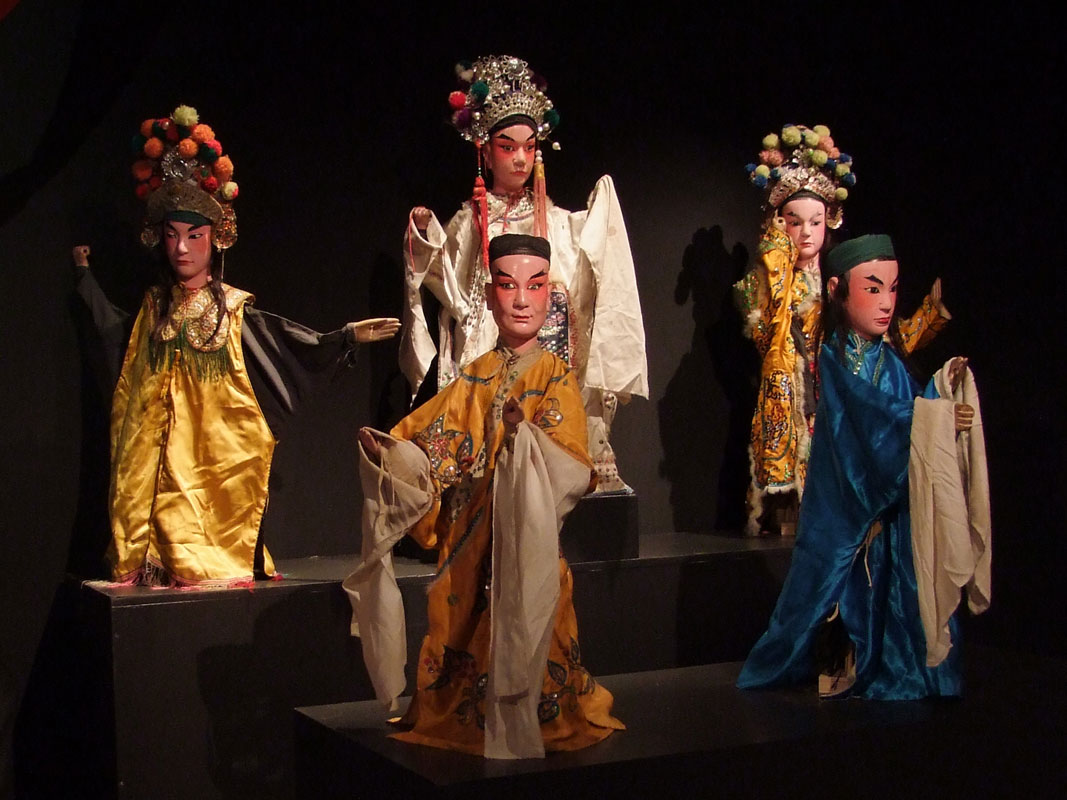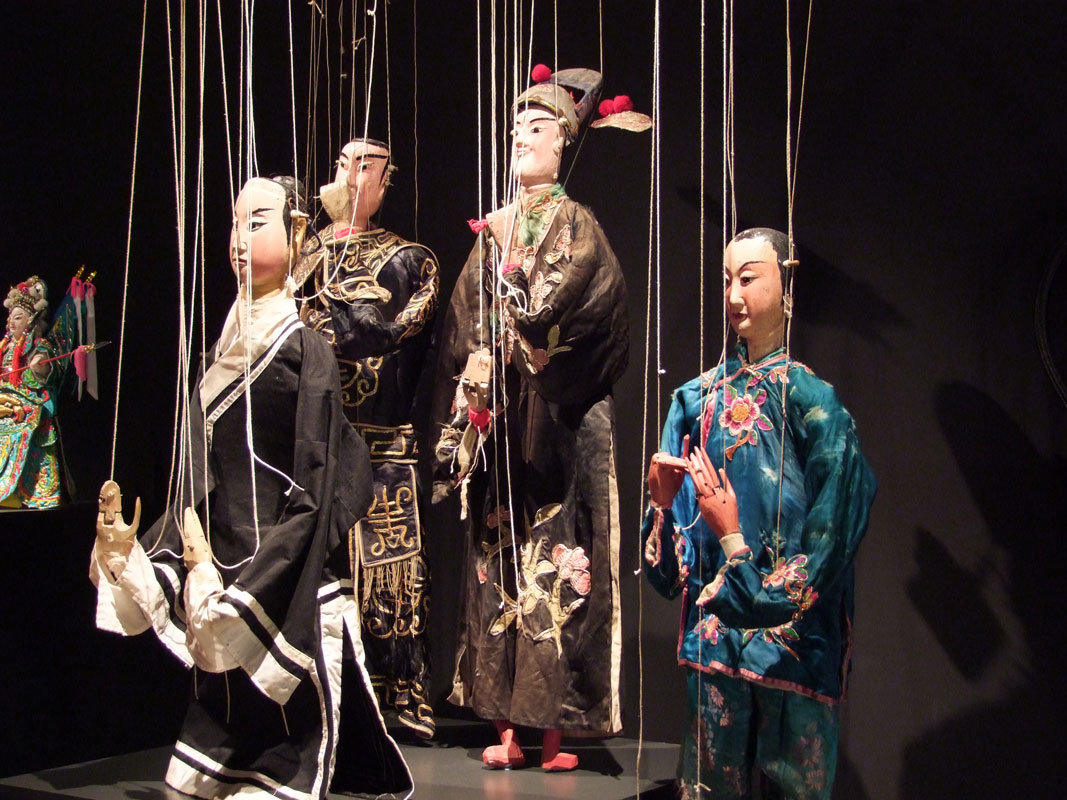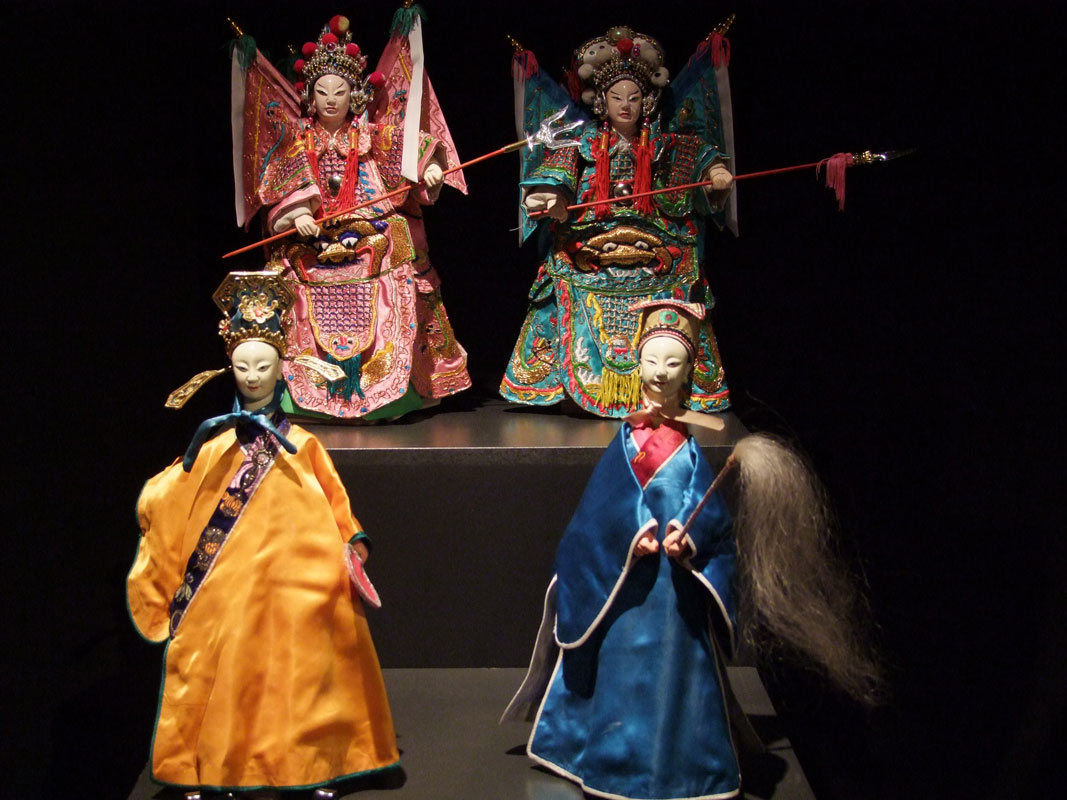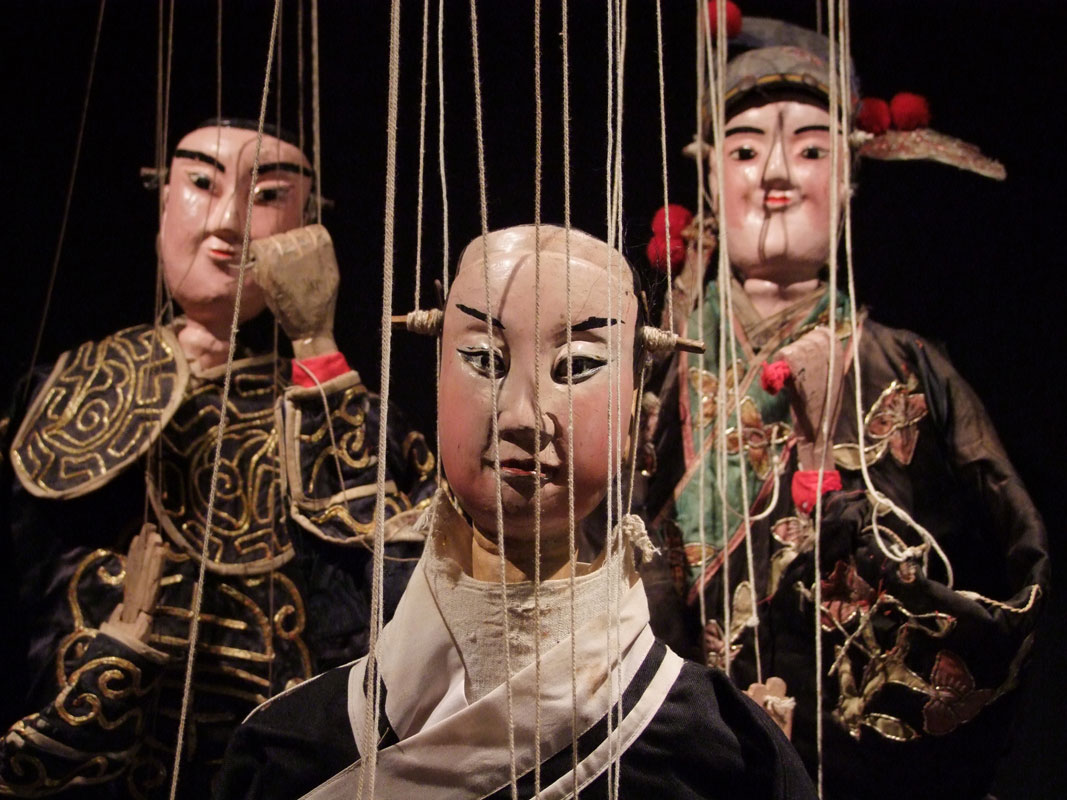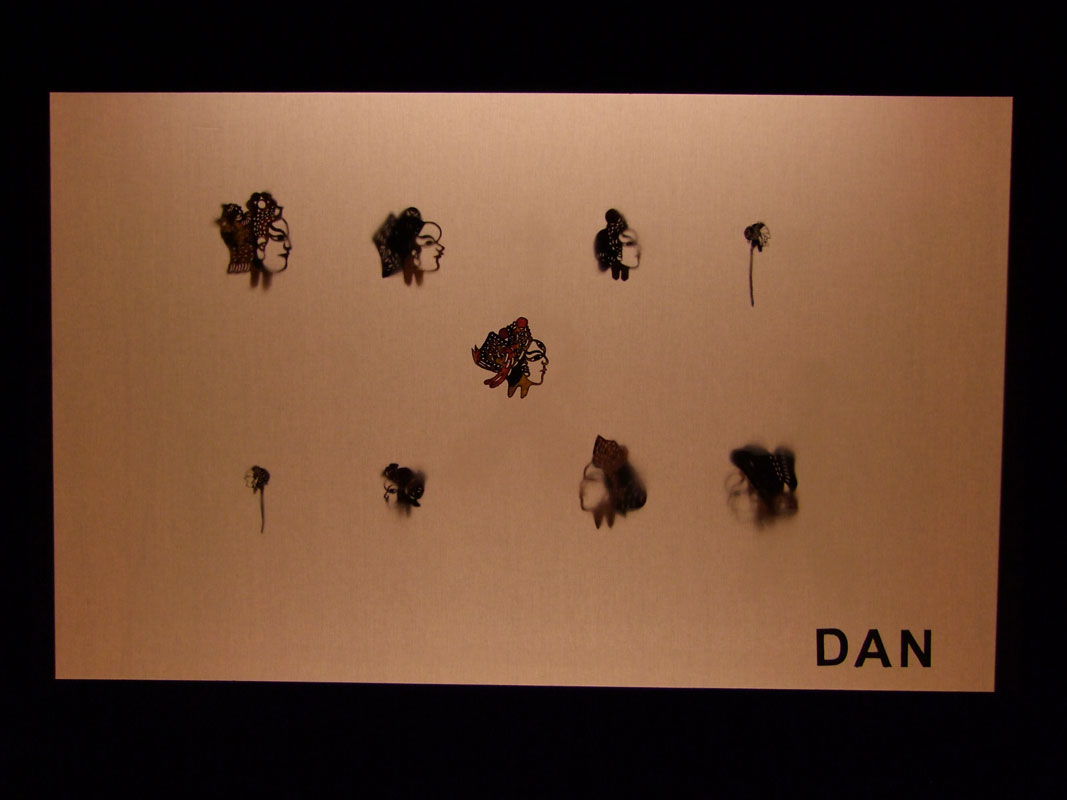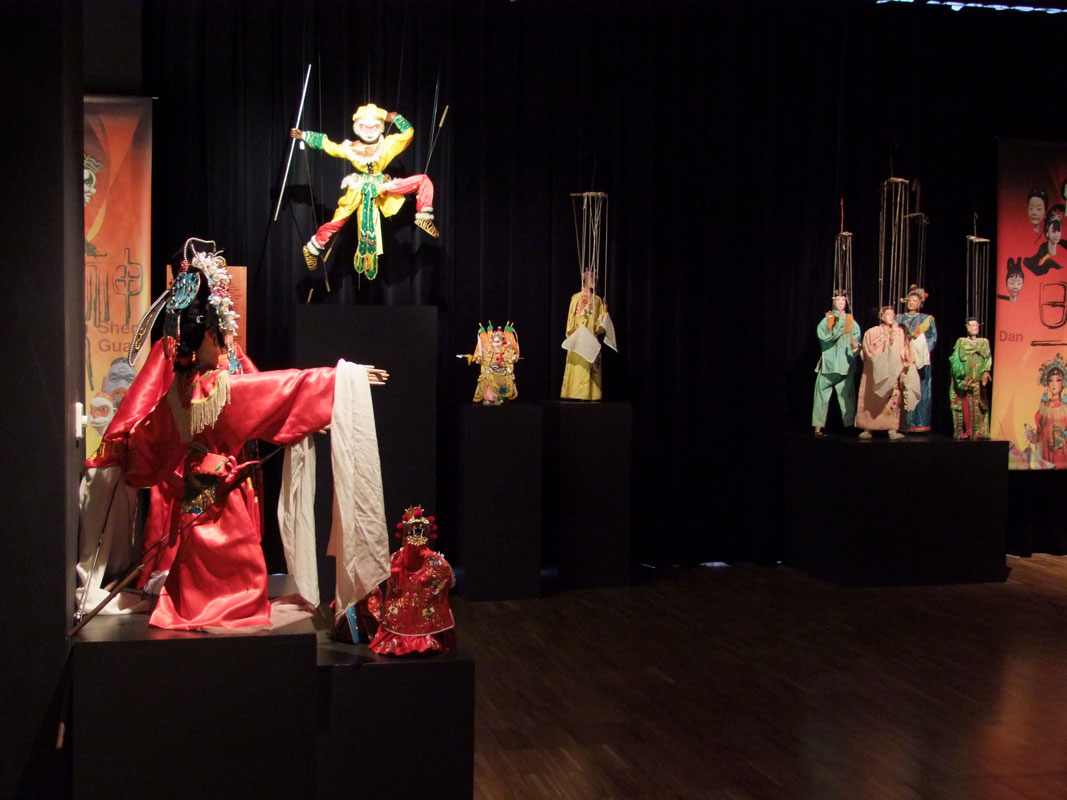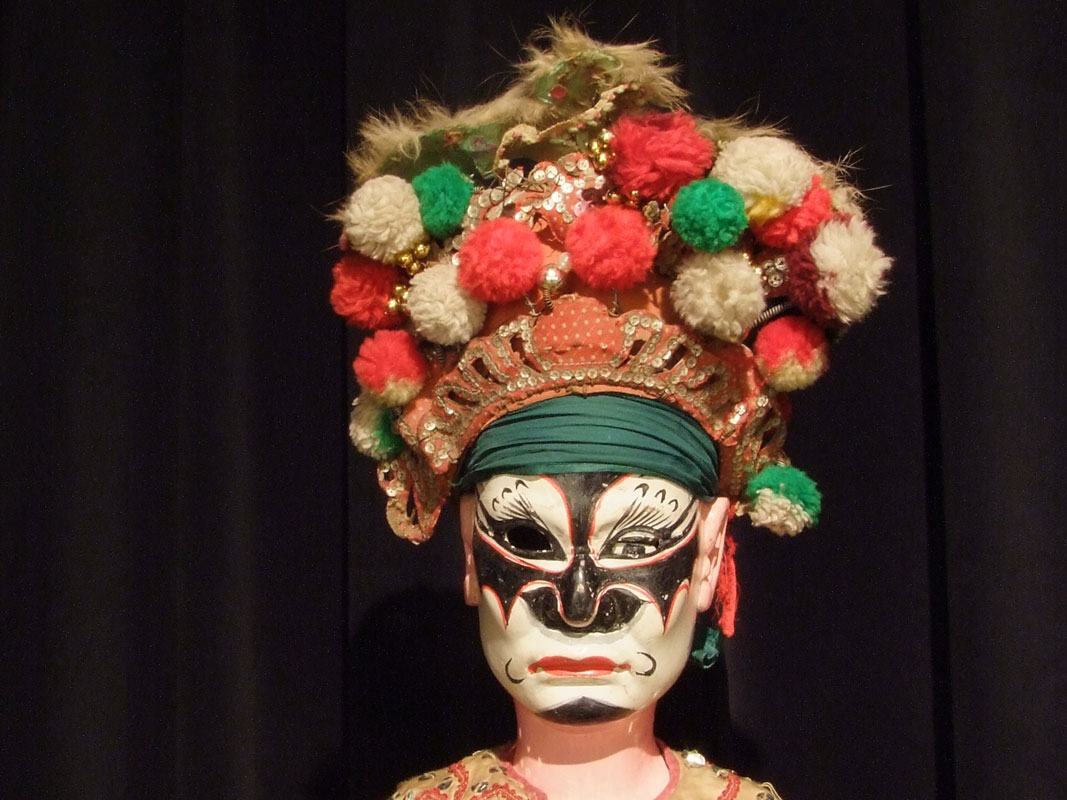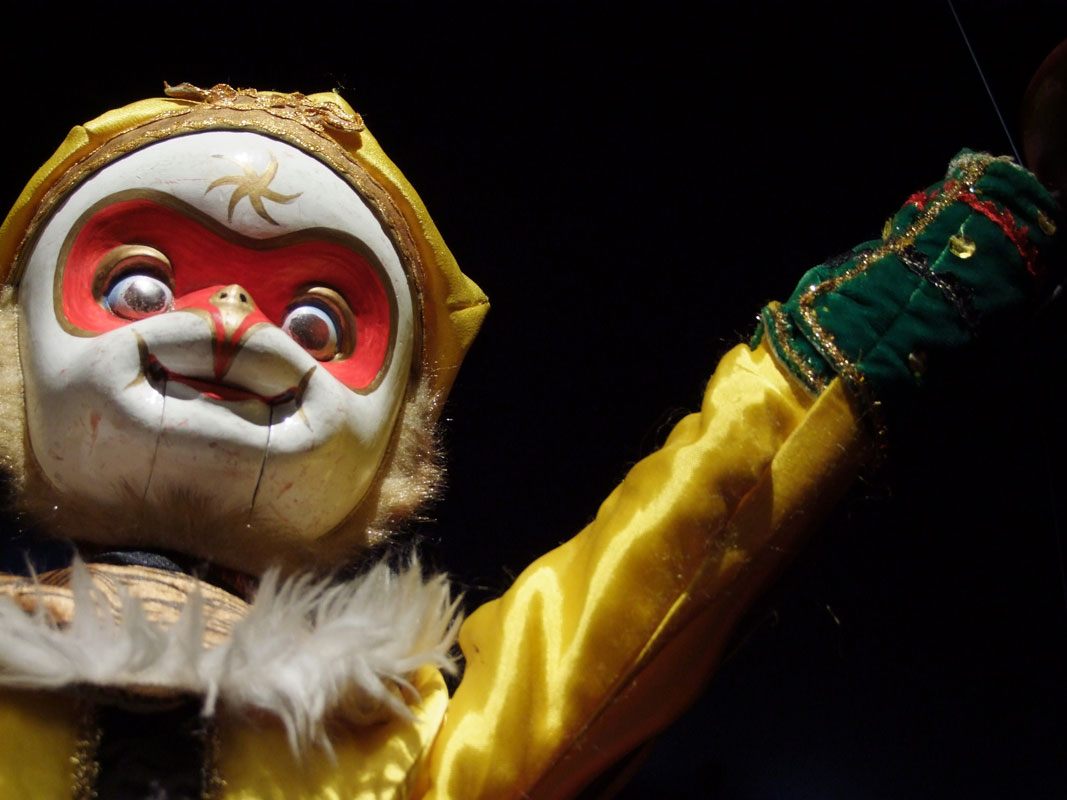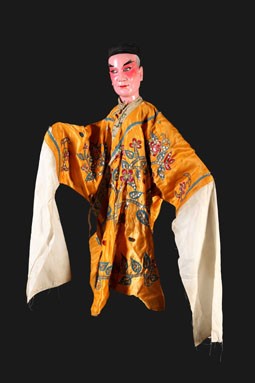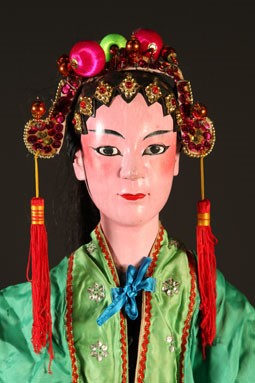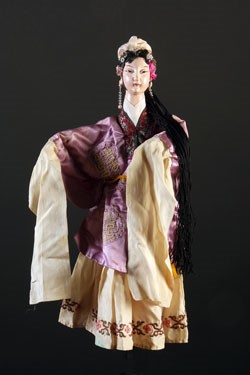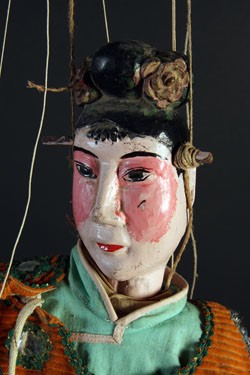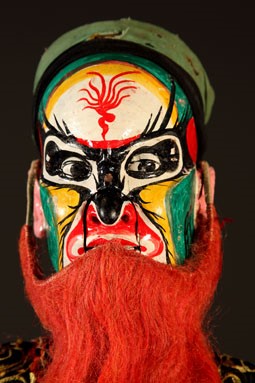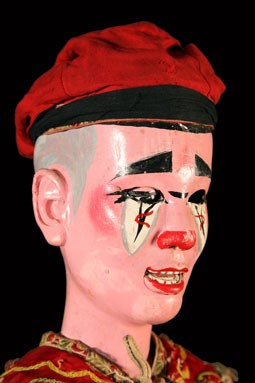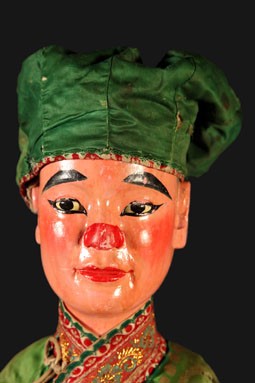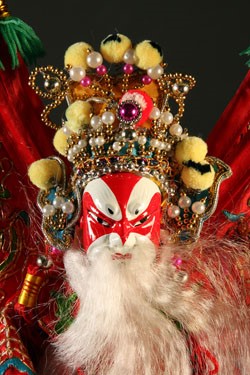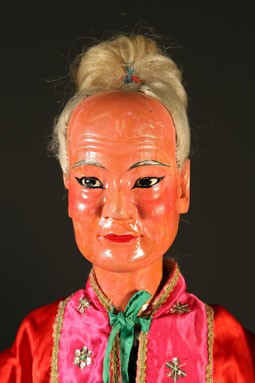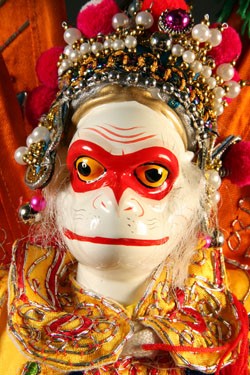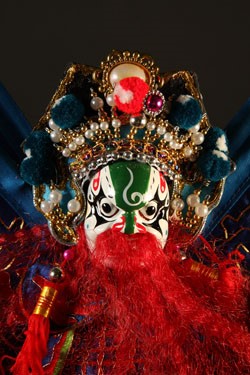
The puppets that featured in this exhibit reflected faithfully what constitutes the traditional Chinese puppet and the techniques involved in the creation and handling of the figures. Visitors examined a wide array of different marionettes, like string-, glove- and shadow-puppets. The string-puppets, dating back to the 19th century, are the oldest samples that TOPIC owns.
The exhibit went beyond the mere showcasing of a collection of Chinese marionettes. Its main objective was to present the six major categories in which traditional Chinese marionettes are divided, based on the role that characters play in a story. It is not common for such a complete representation of Chinese puppets to be shown in this way outside their country of origin.
The exhibit went beyond the mere showcasing of a collection of Chinese marionettes. Its main objective was to present the six major categories in which traditional Chinese marionettes are divided, based on the role that characters play in a story. It is not common for such a complete representation of Chinese puppets to be shown in this way outside their country of origin.
This is precisely the exposition’s main contribution, namely its perspective, based on the narrative discourse, which has not been done in the West before. Even though the stories of the traditional puppet-theatre change, their characters do not. The latter have a number of features and gestures, together with an appearance, that are exclusive to them and which Chinese audiences easily recognise, regardless of the theatre play’s topic or the story it tells. Every puppet producer adds their own original element and personal touch, but always within the frame of basic elements that give each character their identity. In light of this, the exhibit wanted to highlight the differences between the six character archetypes. For this purpose, we had Simon Wong’s generous help, who is the director of the Ming Ri Institute in Hong Kong.
Museum’s opening hours
From Tuesday to Friday
From 10:00 to 13:00 // From 16:00 to 19:00
Weekends and holidays
From 10:30 to 14:00 // From 16:00 to 19:30
Mondays: Closed
The museum will be closed on January 1 and 6, on January 5 in the afternoon; in Carnival from the 27th to the 5th, on June 24 for the San Juan festivities and on December 25. On December 24 and 31 in the afternoon.
Access to the theater will be closed 15 minutes after the start of the performance.

Tolosa Puppet
International Center
Euskal Herria Plaza
20400 Tolosa
Gipuzkoa
